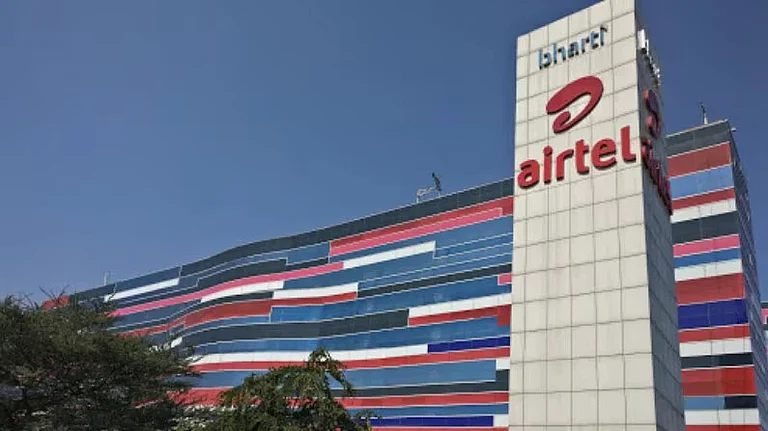
Adani Enterprises partners with Google to build India’s largest AI data centre and green energy infrastructure in Visakhapatnam.
Reliance Industries is building a 3 GW AI-powered data centre in Jamnagar, Gujarat, with reported investments of $20–30 billion.
India’s data centre capacity is projected to quintuple to 8 GW by 2030, requiring about $30 billion in capex.
Bharti Airtel, Reliance, and Adani likely controlling 35–40% of the market, as per Jefferies
Adani Enterprises on Tuesday announced a partnership with tech giant Google to develop India’s largest AI data centre campus and new green energy infrastructure in Visakhapatnam, Andhra Pradesh, with an investment of approximately $15 billion over five years (2026–2030). Adani Group’s joint venture, AdaniConneX, has tied up with the US-based Alphabet-owned company.
Google’s investment in Indian data centres was first reported in August, initially pegged at $6 billion. It has since surged to around $10 billion. Google’s subsidiary, Raiden Info Tech, will lead the project, which is expected to create 188,000 jobs.
However, Adani Enterprises is not alone in the race to capture India’s growing data centre market. Mukesh Ambani-led Reliance Industries is already building a massive AI-powered data centre in Jamnagar, Gujarat, reportedly with a capacity of 3 gigawatts (GW), making it one of the largest in the world.
Although the exact size of the investment in the Reliance project has not been officially disclosed, estimates suggest it could be between $20–30 billion.
According to a recent Jefferies report, India’s data centre capacity is expected to quintuple to 8 GW by 2030, driven by surging data traffic, lower latency requirements, data localisation, and rising use of AI. This expansion will require approximately $30 billion in facility capex and could boost data centre leasing revenues fivefold to $8 billion by 2030.
The report also noted that Bharti Airtel, Reliance Industries, and Adani Enterprises could collectively account for 35–40% of India’s data centre capacity by then. But these players are not alone.
India’s Current Data Centre Capacity
Currently, India’s data centre capacity stands at 1.7 GW. Japan’s NTT Global Data Centers has the largest share at 20%, followed closely by Sify (19%) and ST Telemedia (19%). Airtel Nxtra and CtrlS each hold 15%, Yotta 5%, Princeton Digital 3%, Iron Mountain 2%, and AdaniConneX 1%.
Mumbai and Chennai together account for nearly 70% of India’s colocation data centre capacity. Mumbai-MMR leads with 47% of the total capacity, followed by Chennai at 20%. Delhi-NCR holds 12%, Pune 9%, Bengaluru 5%, and both Hyderabad and Kolkata 3% each. Gujarat currently has no significant colocation capacity, but Reliance’s project is expected to change this significantly.
Indian IT services giant TCS has also announced plans to build 1 GW of AI-grade data centre capacity in India over the next 5–7 years, requiring an estimated investment of $6–7 billion. This will be executed through a new subsidiary focused on AI and sovereign cloud infrastructure.
It is not alone. In July, it was reported that Coforge incurred a capital expenditure of $85 million to set up a data centre for a client.
Cost of Setting a Data Centre in India
According to Jefferies, setting up 1 MW of data centre capacity in India costs about $4–5 million. Based on this, adding 6.4 GW of new capacity by 2030 will require around $30 billion. This investment will also create business opportunities in related sectors: real estate ($6 billion), electrical and power systems ($10 billion), racks and fit-outs ($7 billion), cooling systems ($4 billion), and network infrastructure ($1 billion). Given the high investment required, access to capital will be key for companies to grow in this market, the brokerage noted.
Key players that can benefit from this race include real estate giants like Brookfield, Blackstone, Embassy, and Lodha; EPC players such as Sterling and Wilson, and NCC; engineering solutions providers like Hitachi Energy India (ABB Power), Siemens Energy, Schneider Electric, CG Power; and cooling systems providers such as Voltas, Blue Star, and Hitachi.
$8 Billion Leasing Opportunity
Currently, data centre leasing rates in India average about ₹7,400 per kW per month. At this rate, the market is worth roughly $1.7 billion today and is expected to grow to $8 billion by 2030, according to the brokerage.
Telecom companies are well suited for this capital-intensive, long-term business. In India, three of the top five data centre operators (NTT GDC, STT, Airtel Nxtra) are owned by telcos. Bharti Airtel, with a 15% market share, strong cash flow, and existing enterprise client relationships, is well positioned to benefit from this growth.































